|
Battleship USS MISSOURI
BB-63
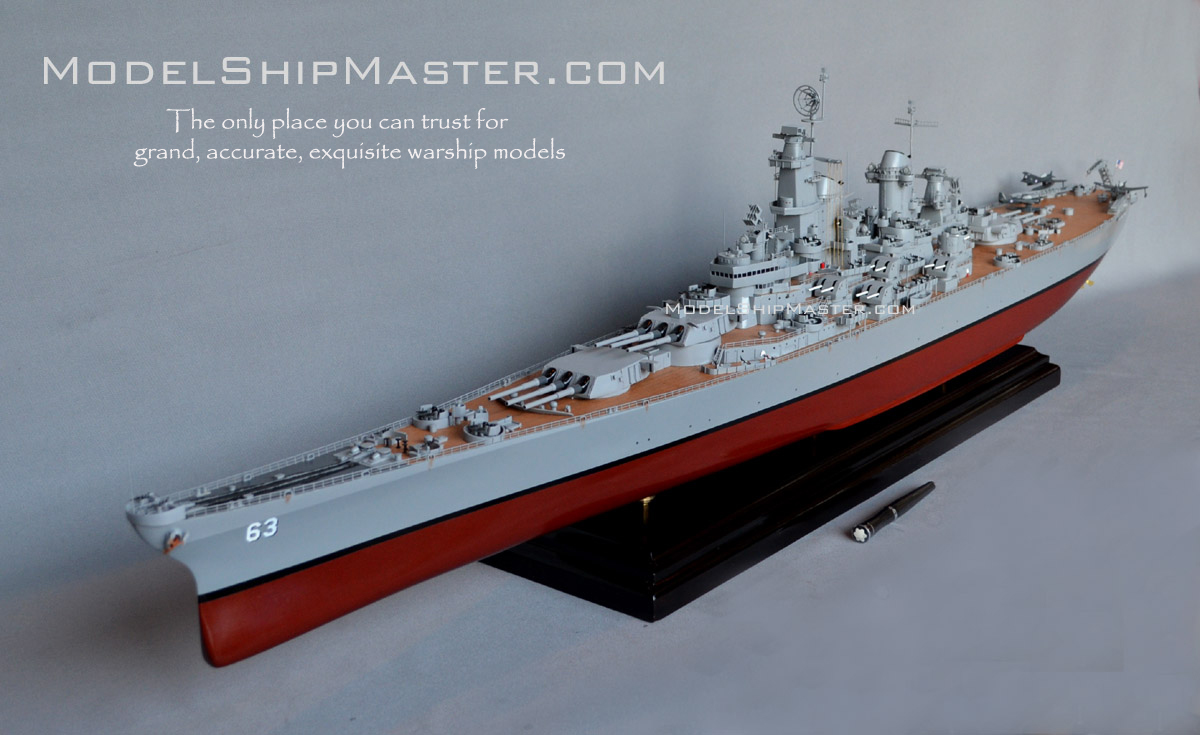
The
Iowa-class USS Missouri is considered by many the most
famous battleship ever built. She combated
in three wars, receiving three battle stars in World War
II, five in the Korean War, as well as two Combat Action
Ribbons and several commendations and medals for the
Gulf War.
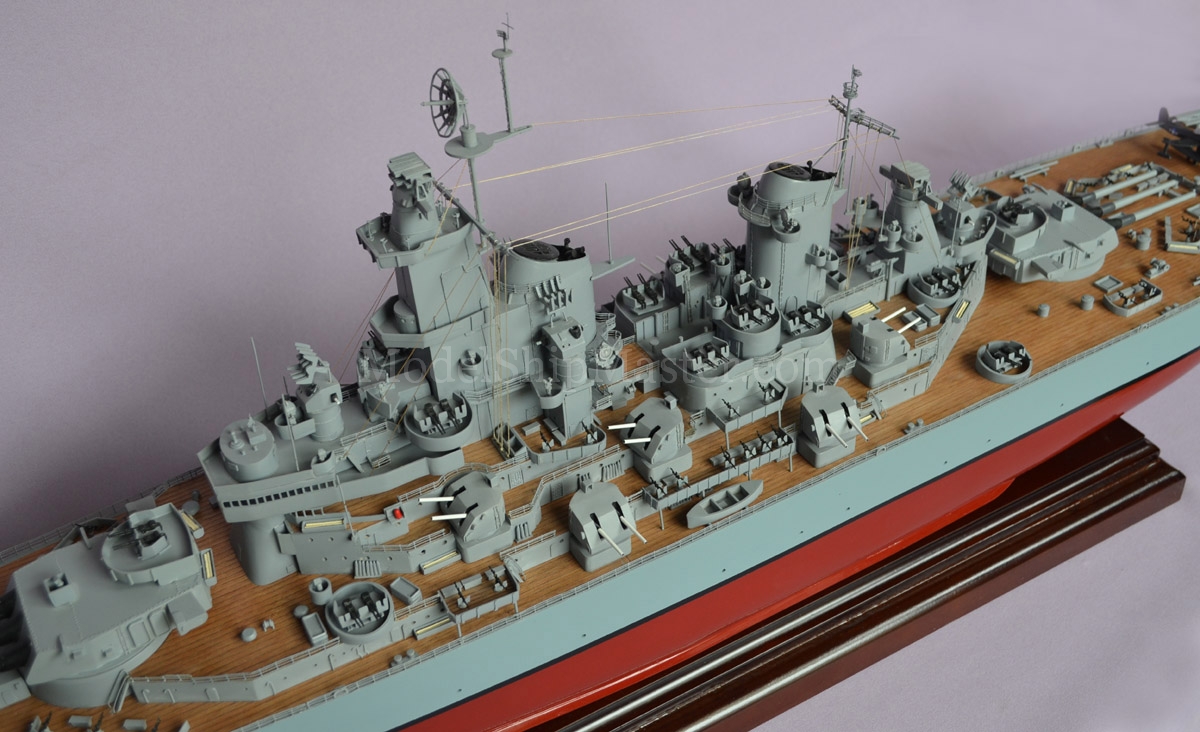
Laid down in January 1941,
the USS Missouri, nicknamed "Mighty Mo", carried nine
massive 16-inch guns, 20 five-inch guns, 80 40mm
anti-aircraft guns, and 49 20mm anti-aircraft guns. Her
16" guns could deliver 1,900 and 2,700 pound projectiles
at 24 miles away. The tremendous fire force pushed the
guns back four feet, with the blast pressure pushing the
water outwards, creating the illusion that the ship was
moving sideways.
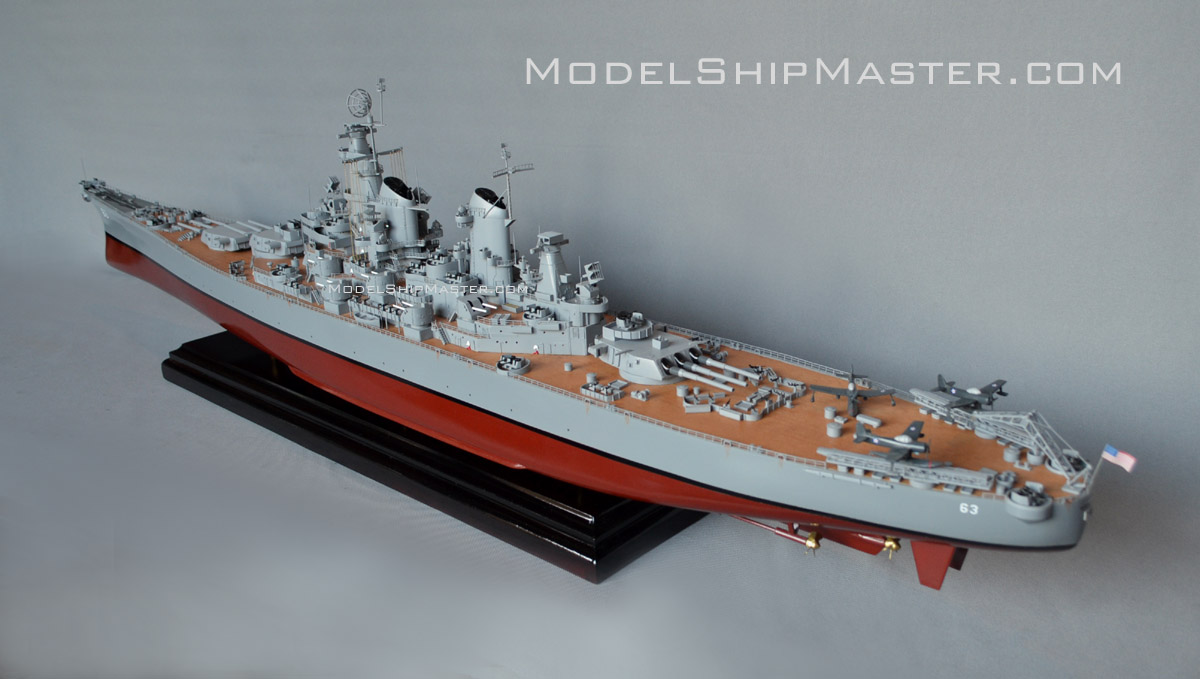
During World War II, USS
Missouri rejoined the carriers as Marine and Army units
stormed the shores of Okinawa on the morning of 1 April. During
this battle, Yamato was sunk. USS Missouri shot down five enemy planes
and assisted in the destruction
of six others. She
helped repel 12 daylight attacks of enemy raiders and
fought off four night attacks on her carrier task group.
Her shore bombardment destroyed several gun emplacements
and many other structures.
About
23:05 on 17 April 1945, USS Missouri detected an enemy
submarine 12 miles from her formation. That set
off a hunter-killer operation which sank Japanese
submarine I-56.
After
almost three months of continuous operations in support
of the Okinawa campaign, USS Missouri arrived San Pedro,
Leyte, 13 June 1945. The mighty fleet set a
northerly course on 8 July to approach the Japanese
mainland. Raids took Tokyo by surprise on 10 July,
followed by more devastation at the juncture of Honshu
and Hokkaido 13 and 14 July. For the first time, a naval
gunfire force wrought destruction on a major
installation within the home islands
when USS Missouri closed the shore to join in a bombardment
on 15 July that rained destruction on the Nihon Steel
Co. and the Wanishi Ironworks at Muroran, Hokkaido.
During
the night of 17-18 July USS Missouri bombarded industrial
targets in the Hichiti area, Honshu. Inland Sea
aerial strikes continued through 25 July 1945,
and Missouri guarded the carriers as they struck hard
blows at the Japanese capital. As July ended the Japanese no
longer had any home waters. USS Missouri had led her fleet
to gain control of the air and sea approaches to the
very shores of Japan.
USS
Missouri then transferred a
landing party of 200 officers and men to
battleship Iowa for temporary duty with the initial
occupation force for Tokyo 21 August. Missouri herself
entered Tokyo Bay early 29 August for the surrender
ceremony.
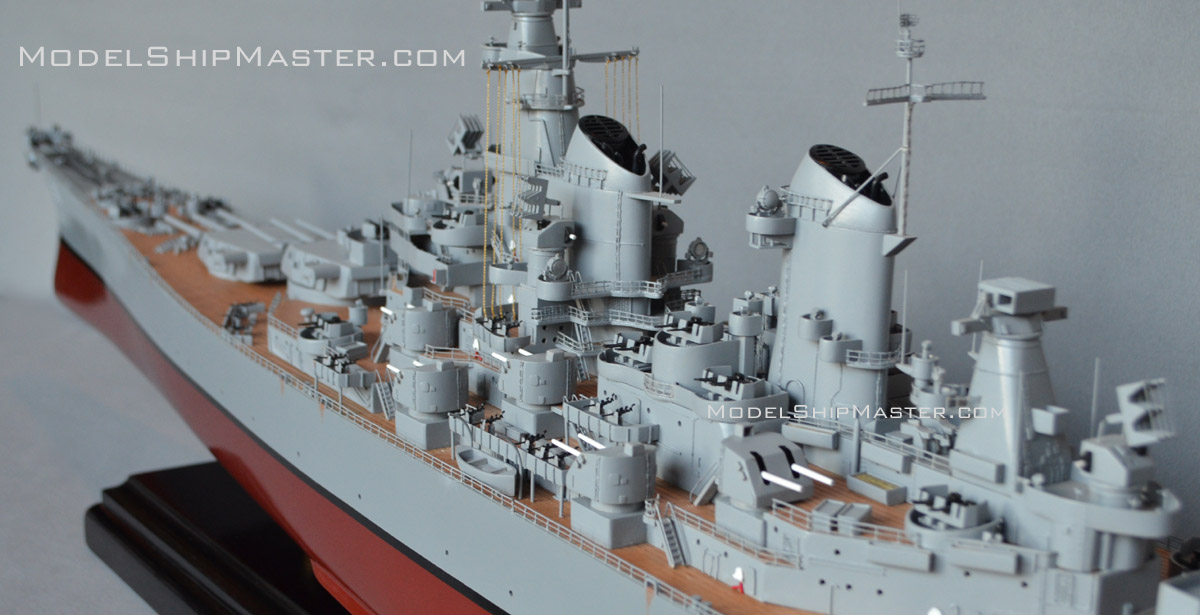
On 9
April, 1946 USS Missouri departed Istanbul and entered Phaleron Bay, Piracus, Greece, the following day.
There were ominous Russian overtures and activities in
the entire Balkan area. Greece had become the
scene of a Communist-inspired civil war. Demands
were made that Turkey grant the Soviets a sea base in
the Dodecanese Islands and joint control of the Turkish
Straits leading from the Black Sea into the
Mediterranean. The voyage of Missouri to the
eastern Mediterranean gave comfort to both Greece and
Turkey.
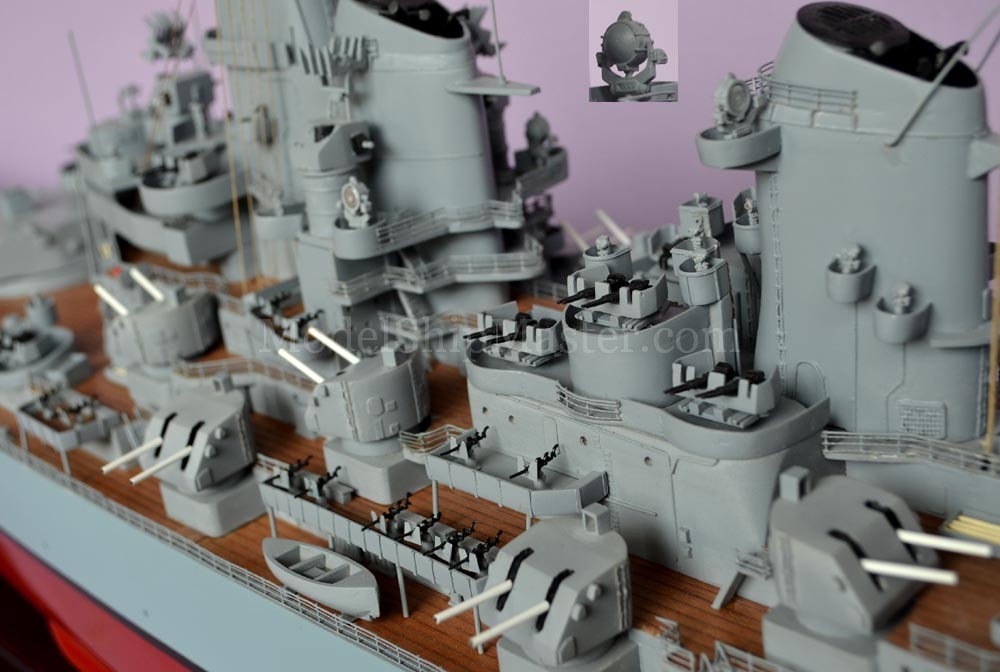
USS
Missouri arrived Inchon 19 September, and on 10 October,
1950, became flagship of Rear Adm. J. M. Higgins,
Cruiser Division 5. She arrived Sasebo on 14 October,
where she became flagship of Vice Adm. A. D. Struble,
Commander, 7th Fleet. After screening carrier Valley
Forge along the east coast of Korea, she conducted
bombardment missions 12 to 26 October in the Chonjin and
Tanchon areas, and at Wonsan. After again
screening carriers eastward of Wonsan she moved into
Hungnam 23 December to provide gunfire support about the Hunguam defense perimeter until the last U.N. troops,
the U.S. 3d Infantry Division, were evacuated by way of
the sea on Christmas Eve 1950.
USS
Missouri conducted additional operations with carriers
and systematic shore bombardments off the east coast of
Korea until 19 March 1951. She arrived Yokosuka 24
March, and 4 days later was relieved of duty in the Far
East. She departed Yokosuka 28 March, and upon
arrival Norfolk 27 April became flagship of Rear Adm. J.
L. Holloway, Jr., commander, Cruiser Force, Atlantic
Fleet.
USS
Missouri was decommissioned for the final time on 31
March 1992 at Long Beach, California.

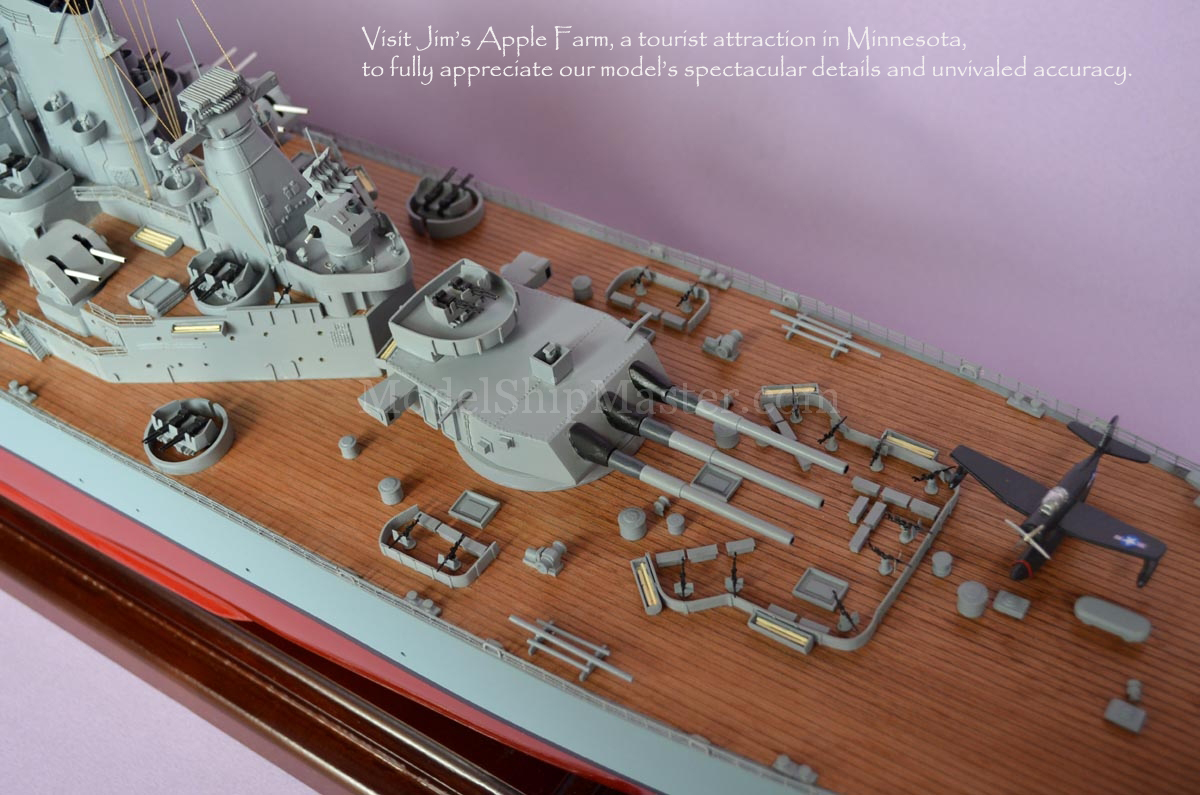
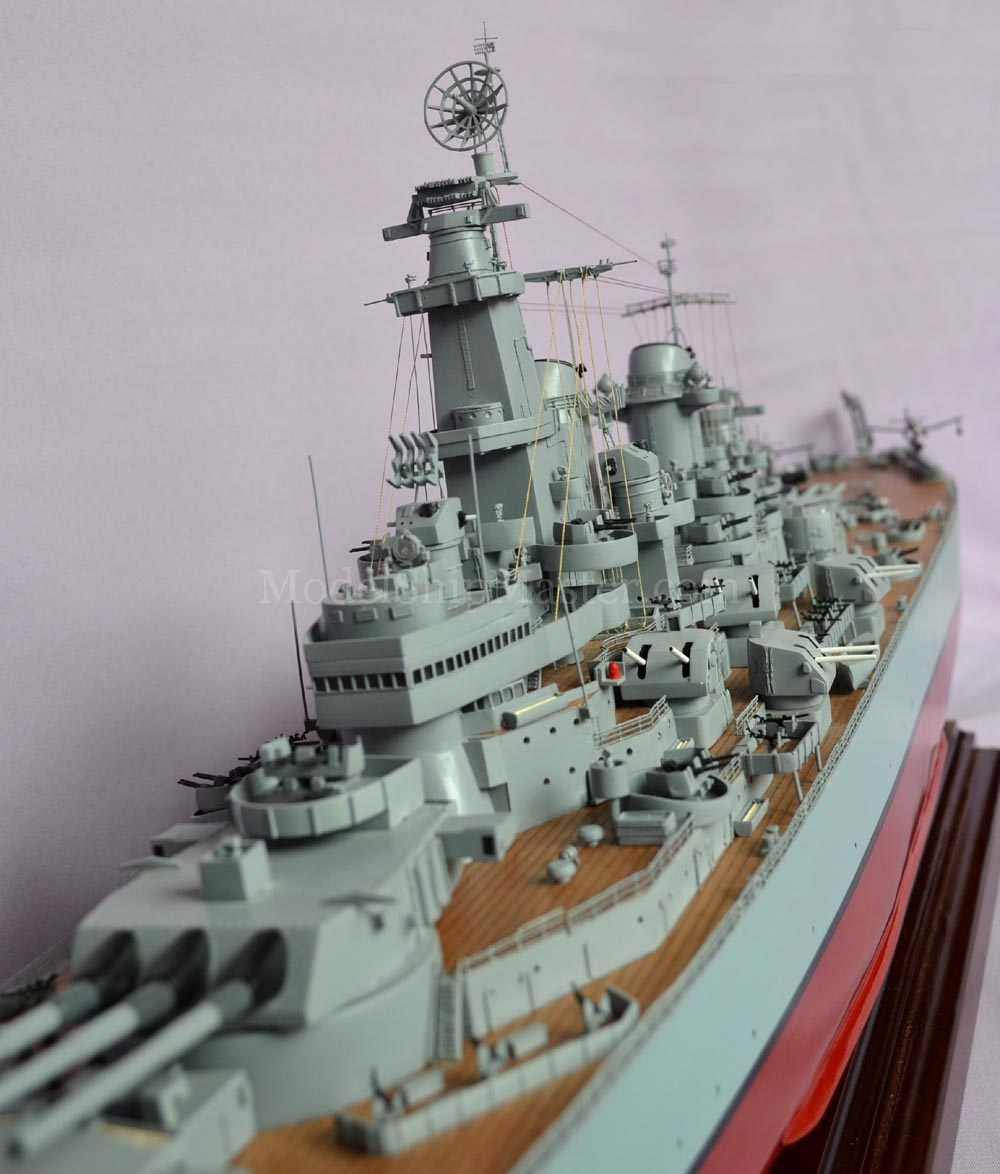
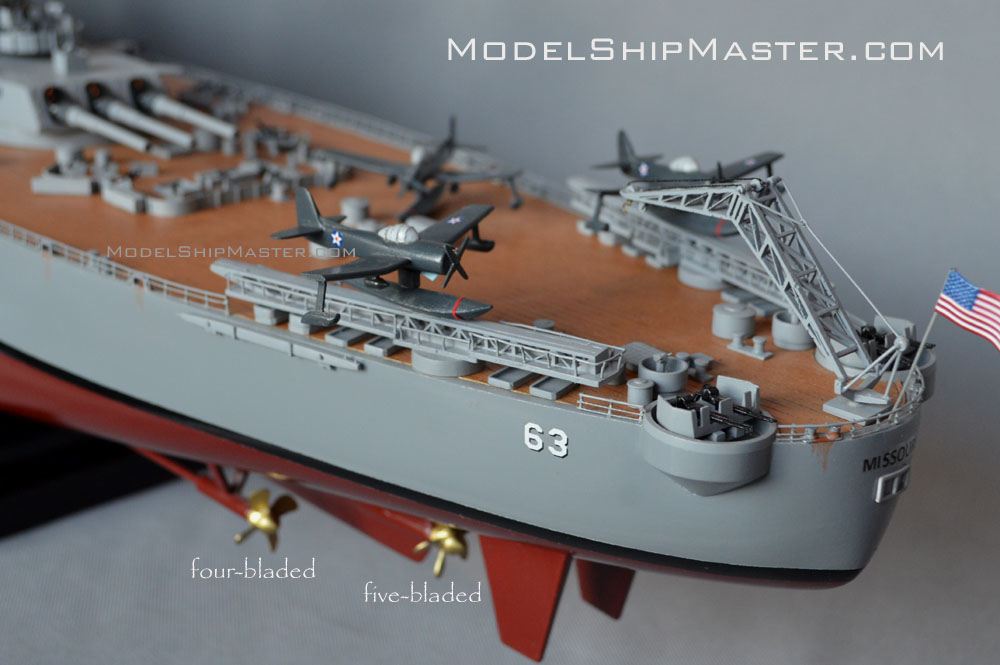
This primarily wood model of the USS
Missouri battleship model is 1/200 scale. 54" long x 15" tall x 7"
wide $8,450
Shipping and insurance in
the
contiguous US
included. Other places: $500 flat rate.
Model comes with a small base. The large base is $400
extra.
This is,
by wide margin, the best commercial USS Missouri model ship ever
constructed. The hull is the most important and this
hull curves are difficult enough that so far none other
makers have done it right. With a
plank-on-frame hull
and hollow superstructure, the model weighs no
more than 30 lbs. A solid hull of this size would be
around 90 lbs, out of range for many standard table
rating which is 70 lbs.
This model
is built per commission only. We require
only a small deposit (not full amount, not even
half) to start the process. The
remaining balance won't be due until the model is
completed.
Click here for
lead time.
30.5" long,
please click here:
smaller Missouri model
For the
USS
Missouri model Korean War
version,
please click here:
Korean War
Missouri model.
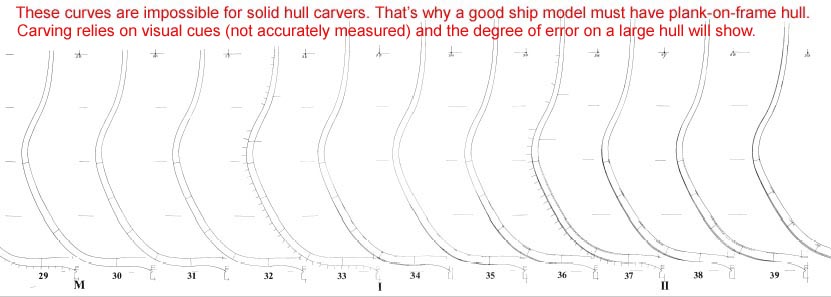
To
construct this accurate model, we visited the USS
Iowa many times. She is about 30 minute drive from
us. Here are some photos of it:
USS IOWA.
If you are looking for a historic ship from the US Navy
to display with this Missouri model, click here:
USS Constitution.
.jpg)
Learn more about the USS
Missouri here:
https://en.wikipedia.org/wiki/USS_Missouri_(BB-63) |